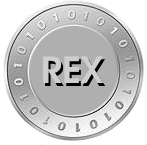 
Financial technologies, or fintech, has evolved rapidly during the last decade with global network-based operations linking individuals, communities and companies to services to manage financial services and transactions. This has been made possible by the constantly falling prices of sophisticated digital devices, including hand-held mobiles, and the spread of global accessibility to the World Wide Web (W3) on the Internet backbone.
Fintech is variably described as integrating mobile payment platforms, spreading to the Internet of things, block chain applications, cryptocurrencies. Processing and management of these data flows include specialized algorithms and complex logic to take decisions and route data through what is sometimes referred to as Artificial Intelligence (AI).
Fintech is emerging as the source of funding for global economic development including Agenda 2030 Sustainable Development Goals with Green, Social and Sustainable Bonds representing vehicles capable of generating significant investment resources valued at $trillions in contrast to the global totals applied just five years ago (2005 ) measured in a few hundred $billion.  Fintech is therefore an important resource and this raises a large number of questions in relation to the magnitude of the risk to those who provide funds, including individual saver-investors and community savings groups associated with the commitment of such large sums of money to specific actions. Such initiatives do not get rid of the debt problem. Fintech is therefore an important resource and this raises a large number of questions in relation to the magnitude of the risk to those who provide funds, including individual saver-investors and community savings groups associated with the commitment of such large sums of money to specific actions. Such initiatives do not get rid of the debt problem.
Also, monetary management and national policies with regard to very large financial flows and a cause for concern of governments resulted in 2008 in a financial crisis linked to fraudulent dealings on a massive scale beyond the reach and oversight of regulatory authorities.
Cryptocurrencies also added the promise of minimal transfer costs associated with real time transactions that are not routed through formal procedures controlled by financial intermediaries either private or government based. These changes in the controls over monetary flows are a concern for some monetary authorities who are in a transitional phase with respect to the relevance and possible structures of regulatory frameworks.
The quantitative easing fiasco
Quantitative easing intensified the process of transfer of funds into assets removing them from circulation. This transfer was intensified by lowering the risk of asset speculation by close to zero interest rates. As a result increasing amount of funds emanating from QE releases has ended up in assets including land, real estate, corporate share buy backs raising the stock market valuations and precious metals. However, the manipulation of gold prices and the imposition of a depression in the supply side productive economy has resulted in declining real wages and investment and productivity, the essential ingredients for resilience and capability of supporting wage earners with adequate incomes.
Assets as non-circulating funds
 
50 years of financialization has been intensified by QE to create a significant removal of circulating funds and locking these up in speculative assets meaning funds have been withdrawn from supply side transactions and ability to pay higher real wages and therefore supply side demand has been depressed as a result of QE. The instability is so intense that Bitcoin, designed to be a medium of exchange with minimized transaction costs has become a major speculative asset "out performing" other assets including gold.
This bizarre state of affairs reflects the lack of confidence in fiat currencies as an asset including the US dollar as a reserve currency.
The productivity deficit
According to the Real Incomes Approach (RIO-Real Incomes Objective) financialization during the last 50 years has had a very bad track record in encouraging productivity becoming a foundation for raising the purchasing power of national currencies. The only macroeconomic policy field of research and applied policy development that places productivity at the centre of policy is the Real Incomes Approach. This approach was developed by Hector McNeill starting a decade before he initiated the development of LST. Productivity remains the central factor to bring back stability to the economy and according to the choice of technology, bring the world back into equilibrium concerning the use of natural resources and carrying capacity dependent on the degree to which the human population numbers are moderated.
Covid-19 relief

With the Covid-19 pandemic attempts have been made to provide relief for those out of work as a result of having to observe behavioral constraints linked to interpersonal proximity. However, this has incurred government debt and in some cases such relief being advanced as loans. One way to facilitate this type of support is to use digital community exchange currencies (DXC) based on a rechargeable card like a credit card. In some countries these have been used and they can have restrictions such as not being exchangeable for cash or used in paying for gambling services.
Directed and traced funds

The most significant problem with financialization and monetary policy has been the destructive flow of QE funds into assets when the economy and the majority of constituents wellbeing requires a direction of funds into productive investment. Therefore when a government declares that funds are being inserted into the economy to encourage investment there needs to be means of being able to track funds so as to ensure that they end up in productive investment. Real Exchange is an electronic or digital currency similar to Bitcoin but it very different because ownership and types of transactions of the funds is openly traced. Because of privacy issues the ownership tag can in fact be switched off and then trasactions are tagged by location and type of transaction. The monitoring mechanism is an Accumulog an immutable real time updated block chain system identified by McNeill in 1985 when he was developing LST. This was over 20 years before the Bitcoin block chain system was first described. The method of tracing fund ownership or transaction types is based on a simple locational-state model.
One of the more interesting spin-offs from this specific technology is the tying in of this mechanism into the Real Incomes Approach to economics where corporate income (profits do not exist) for those using REX, is tied to real incomes generation within the economy as a result of increased productivity and which can eliminate the need to repay the REX funds received. Since banks are not required to operate this system there is no debt only an obligation to bring about gains in productivity, unit prices and real wages. The degree to which this is achieved increases corporate net real incomes. In this case a fully fledged macroeconomic framework is being developed around REX to provide incentives and disincentives to types of transaction based on interest rate linked levies and capital accumulation levies. These are design to maintain market buoyancy while moving funds towards productivity-enhancing and income-enhancing activies as a basis for real economic growth.
The Bretton Woods moment

The failing central bank based monetary policies based on ill-tamed financialization has raised global debt while the proportion of failed investment projects exceeds 30% as a result of poor design and failure to apply due diligence. The IMF and World Bank have come under increasing pressure from the financial services sector as well as those governments whose governments benefit from the external affairs agencies of the USA that coordinate decisions made by such international agencies such as the IMF and World Bank. Basically governments who have benefited most from US State Department policies want the international monetary system to continue as it is.
Therefore in October 2020 the IMF announced that with Covid-19 and the need to change the agenda they had decided that this is a new "Bretton Woods moment". There is a large amount of pressure for the IMF to develop a digital currency under a new International Digital Monetary Fund (IDMF) and this is to be linked to the evolving concepts of Central Bank Digital Currencies (CBDC).
3DP, analytical tools and financial technology
The digital systems-based investment decision analysis is part of the ecosystem within which different types of data are shared between devices. The effectiveness of any device in the system depends upon the quality of the data it requires to be able to process this data to generate useful information. In the field of project, programme and policy-related investments the datasets that are used to conduct audits, economic, financial, sustainability appraisals needs to be of the highest quality so that decisions on whether or not to invest are taken on the basis of reliable information. In each applications domain what constitutes critical datasets required to build the technical and quantitative relationships upon which to establish financial appraisals required vetting by experts in the applications domains in question.
This is the role of 3DP (the OQSI Due Diligence Design Procedure) which guides domain practitioners to take into account all critical factors and to give due consideration to each one. Domain practitioners can be aided by analytical tools to ensure validation of data used and provide high quality analyses according to each application domain. This helps ensure that the information and datasets used in completing a project, programme or policy design help combine lower risk with the highest probability of feasibility and beneficial outcomes.
Locational-state
Applied locational state theory (LST) assists domain practitioners define complete data sets1 according to any given decision analysis problem by making use of data reference models (DRMs). In this way it is possible to specify "complete datasets" whose content is able to explain the determinant relationships between inputs and outputs of interest. IN statistical terms "complete datasets" have the effect of raising the "explained variance" attributable to data inputs and reducing the "unexplained variance" component. This has a direct impact on the degree of precision of analysis by reducing uncertainty and thereby lower risk associated with results projections that arise from decision options. This capability that can be achieved through applied LST has a fundamental role in helping fintech operations through more transparent analysis and predictability of the outcomes of decisions so as to incur lower risk associated with decisions.
1 DRM-Data Reference Model, for further information click here
|
|

